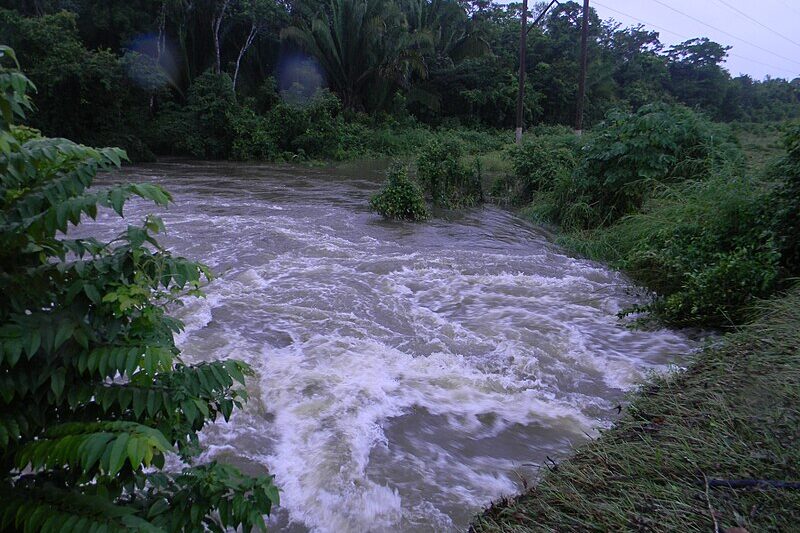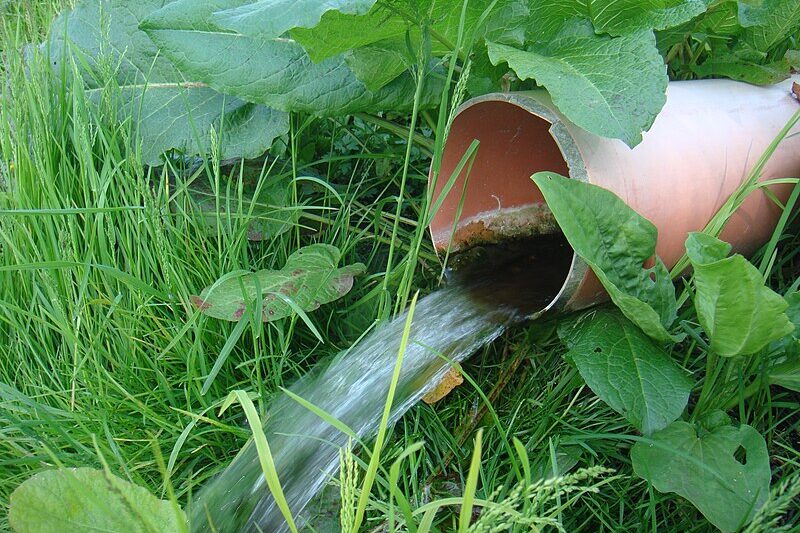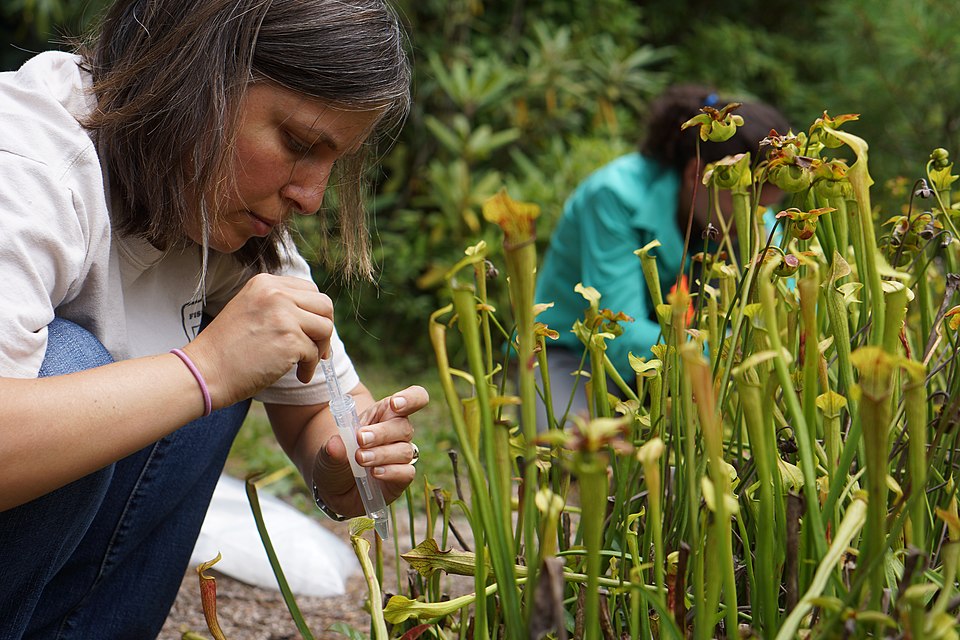1. The Lanternfly Onslaught: A Tiny Terror Takes Over NYC

The spotted lanternfly, is a planthopper indigenous to parts of China and Vietnam. It has spread invasively to Japan, South Korea, and the United States, where it is often referred to by the acronym “SLF”. With its striking red and black wings, might look like a harmless insect, but it’s anything but. These invasive pests have been wreaking havoc on New York City’s ecosystems, feasting on crops, trees, and plants with an insatiable appetite. First spotted in Pennsylvania in 2014, they’ve since spread to NYC, leaving a trail of destruction in their wake. Experts warn that their rapid reproduction and lack of natural predators make them a formidable threat to the city’s green spaces and agriculture.
Residents have been urged to squash these pests on sight, but the battle is far from over. The lanternfly’s resilience and adaptability have made it a symbol of the challenges cities face in combating invasive species. As New Yorkers grapple with this tiny terror, it’s a stark reminder of how interconnected our world is and how easily a single species can disrupt the delicate balance of an ecosystem. The lanternfly invasion is not just a nuisance—it’s a wake-up call to the broader issue of invasive species and their impact on urban environments.
2. Giant Snails: The Slow-Moving Invaders

Just when New Yorkers thought they’d seen it all, giant African land snails began making headlines. Allow me to enlighten you. The Lissachatina fulica is a species of large land snail that belongs in the subfamily Achatininae of the family Achatinidae. It is also known as the giant African land snail, which shares the common name “giant African snail” with other species of snails such as Achatina achatina and Archachatina marginata. However, this snail species has been considered a significant cause of pest issues around the world. As a result, it is a federally prohibited species in the US and illegal to sell or possess.Internationally, it is the most frequently occurring invasive species of snail.
These massive mollusks, which can grow up to 8 inches long, are not only a sight to behold but also a serious threat to the city’s ecosystem. Known for their voracious appetite, they consume over 500 types of plants and can even damage plaster and stucco on buildings. Their arrival in NYC has left experts scrambling to contain their spread and educate the public about the dangers they pose.What makes these snails particularly concerning is their ability to reproduce rapidly and carry parasites that can harm humans. The discovery of giant snails in the city has sparked a mix of curiosity and concern among residents. While some are fascinated by their size, others worry about the long-term impact on local flora and fauna. The giant snail invasion is a reminder that invasive species come in all shapes and sizes, and their presence can have far-reaching consequences for urban ecosystems.
3. The Silent Spread of Invasive Species

Invasive species often arrive unnoticed, hitching rides on cargo ships, airplanes, or even in the luggage of unsuspecting travelers. Once they establish a foothold, they can quickly outcompete native species, disrupt ecosystems, and cause economic damage. The lanternfly and giant snail invasions are just the latest examples of this global issue, but they highlight the need for vigilance and proactive measures to prevent future invasions. Moreover, the rapid spread of invasive species underscores the importance of international cooperation and information-sharing to prevent the introduction of new invaders. By strengthening global partnerships and sharing best practices, we can improve our chances of detecting and responding to invasive species before they become established.
Experts emphasize that early detection and rapid response are key to managing invasive species. Public awareness campaigns, stricter regulations on imports, and community involvement can all play a role in curbing their spread. As New York City continues to grapple with these unwelcome guests, it’s clear that the fight against invasive species is a collective effort that requires cooperation on local, national, and global levels. Furthermore, innovative technologies, such as AI-powered monitoring systems and genetic analysis, can also enhance our ability to detect and respond to invasive species. By leveraging these tools and fostering a culture of collaboration and vigilance, we can reduce the risks associated with invasive species and protect the world’s ecosystems and biodiversity.
4. The Role of Climate Change in Species Invasion

Climate change is not just altering weather patterns—it’s also reshaping ecosystems and creating new opportunities for invasive species. Warmer temperatures, rainy seasons, shifting precipitation patterns, and extreme weather events like flooding, irrigation or erosion can all contribute to the spread of non-native species. In NYC, the combination of a warming climate and urban environment has created a perfect storm for invaders like the lanternfly and giant snail. Flooding can disrupt natural barriers, such as rivers and wetlands, that normally prevent non-native species from entering new areas. Climate change can also alter water temperature and chemistry, making it more suitable for non-native species to survive and thrive.
Scientists warn that as the climate continues to change, the city may face even more invasive species in the coming years. As a result, species that were once confined to warmer regions may find NYC increasingly hospitable, leading to new challenges for local ecosystems. i.e., Heavy rainfall and flooding can transport non-native species into new areas, allowing them to establish themselves in previously unoccupied habitats. additionally, The intersection of climate change and invasive species is a complex issue that underscores the need for comprehensive strategies to protect biodiversity and urban environments.
5. The Economic Toll of Invasive Species

Invasive species don’t just harm ecosystems—they also come with a hefty price tag. From agricultural damage to infrastructure repairs, the economic impact of species like the lanternfly and giant snail can be staggering. The giant African snail, for instance, is a highly destructive invasive species that has been wreaking havoc on crops and livelihoods in many parts of the world. Researchers have identified this snail infestation to have caused significant losses to subsistence and cash crops, with some households reporting a 80-90% reduction in garden size in Solomon’s Islands. Also,the snail’s voracious appetite and rapid reproduction rate make it a formidable pest that can quickly overwhelm local ecosystems. In NYC, the cost of managing these invaders is already straining resources, and experts predict that the financial burden will only grow if their spread is not controlled.The economic toll extends beyond immediate costs, affecting industries like tourism, agriculture, and real estate.
For example, the lanternfly’s destruction of crops and trees can lead to higher food prices and reduced property values. The Spotted Lanternfly feeds on over 70 plant species, including grapes, apples, and hardwood trees, its preference for oak, maple, and pine trees can lead to significant forestry losses. Additionally, the giant snail’s appetite for building materials could result in costly repairs for homeowners and businesses. The economic toll of invasive species like the giant African snail and the lantern butterfly can be significant, with impacts on agriculture, forestry, and recreation, as well as local livelihoods and food security. As the city grapples with these challenges, it’s clear that the fight against invasive species is not just an environmental issue—it’s an economic one as well.
6. The Human Factor: How We’re Fueling the Invasion

Human activity is one of the primary drivers of invasive species spread. From global trade to urban development, our actions create pathways for non-native species to enter new environments. International trade: The Giant African Snail has been intentionally introduced to new regions through the pet trade, as a food source, and for traditional medicine. For instance, agricultural practices such as tilling of soils and repeated habitual disturbance can facilitate the African giant snail’s egg dispersal already deposited in soils. In NYC, the bustling port and international airport serve as gateways for invaders like the lanternfly and giant snail, while urban sprawl provides them with ample habitat to thrive.Experts stress that addressing the root causes of species invasion requires a shift in how we interact with the environment.
Furthermore, Invasive species like the spotted lantern butterfly may have hitchhiked into planes, fruit trucks, hiding in containers, crates and packaging materials, resulting in contaminated cargos, shared around through human migration. Also, Increased international trade and travel have created opportunities for invasive species to spread, and, fficient knowledge about the risks and consequences of invasive species can lead to unintentional spread.Reducing our reliance on single-use plastics, supporting sustainable agriculture, and advocating for stricter biosecurity measures are all steps we can take to minimize our impact. As New Yorkers, we have a responsibility to be mindful of our role in this issue and take action to protect our city’s ecosystems.
7. The Ecological Domino Effect

Invasive species don’t just disrupt ecosystems—they can trigger a cascade of effects that ripple through entire food webs. The lanternfly, for example, not only damages plants but also reduces food sources for native insects and animals. Similarly, the giant snail’s appetite for vegetation can alter soil composition and affect plant growth, leading to long-term changes in the ecosystem. For instance, invasive species can cause native species displacement by outcompeting for resources, leading to native species population decline or even extinctions. Additionally, Invasive species can lead to loss of biodiversity as the mortality rate native species diversity can decline, thereby reducing ecosystem resilience and function. Scientists warn that these disruptions can have far-reaching consequences, from the decline of native species to the loss of biodiversity.
Invasive species can alter ecosystem processes, causing ecosystem disruption such as nutrient cycling, water flow, and fire regimes. In NYC, where ecosystems are already under pressure from urbanization and environmental pollution, the added stress of invasive species could push some species to the brink of extinction. The ecological domino effect is a stark reminder of how interconnected our world is and the importance of protecting its delicate balance. Preventing the introduction and spread of native species is critical to maintaining ecosystem integrity and preventing ecological domino effects.
8. The Battle for Biodiversity

Invasive species pose a significant threat to biodiversity, outcompeting native species for resources and altering habitats. In NYC, the lanternfly and giant snail are just the tip of the iceberg, with dozens of other invasive species already established in the city. From plants like Japanese knotweed, the Swallow-wort (highly invasive vine that kills trees and alters ecosystems), the Emerald Ash Borer (a beetle that kills ash trees, causing significant economic and ecological impacts, to animals like the mute swan, these invaders are reshaping the city’s ecosystems in ways that may be irreversible. Conservationists are working tirelessly to protect native species and restore balance to the city’s ecosystems.
However, Botanists are at work, examining, conducting experiments, collaboration and coordination, with other stakeholders, such as land managers, conservation organizations, and government agencies, to coordinate efforts and develop effective management strategies for habitat restoration, invasive species removal, and public education, which are all part of the broader strategy to safeguard biodiversity. However, the battle is far from over, and the stakes are high. As New Yorkers, we must recognize the value of our city’s unique biodiversity and take action to preserve it for future generations.
9. The Role of Citizen Science in Combating Invasive Pests

One of the most powerful tools in the fight against invasive species is citizen science. By engaging the public in monitoring and reporting invasive species, cities like NYC can gather valuable data and respond more quickly to new threats. Initiatives like the “Squash the Lanternfly” campaign have already shown how effective community involvement can be in raising awareness and taking action. Experts believe that empowering citizens to take an active role in conservation efforts is key to managing invasive species. Therefore, they call conferences for public enlightenment purposes. From reporting sightings to participating in removal programs, there are countless ways for New Yorkers to contribute.
The benefits of citizen science extend beyond just managing invasive species. By fostering a sense of connection and responsibility among residents, citizen science initiatives can also promote environmental stewardship and community engagement. As New Yorkers work together to protect their city’s ecosystems, they can build a stronger sense of community and shared purpose. Moreover, citizen science initiatives can provide valuable educational opportunities, teaching residents about the importance of biodiversity, ecosystem health, and conservation. By leveraging the power of citizen science, NYC can create a more sustainable, resilient, and environmentally conscious community for all its residents.
10. The Future of NYC’s Ecosystems

As NYC continues to grapple with invasive species, the question on everyone’s mind is: “what’s next?” Experts predict that the city will face new invaders in the coming years, from aquatic species like the Asian carp, which could devastate the city’s waterways, to plants like the kudzu vine, which could blanket entire neighborhoods. The combination of climate change, urbanization, and global trade creates a perfect storm for future invasions, making it essential to stay vigilant and proactive. Rising temperatures, changing precipitation patterns, and increased human activity will continue to facilitate the introduction and spread of invasive species, posing significant threats to the city’s ecosystems, economy, and human health.
The future of NYC’s ecosystems depends on our ability to adapt and respond to these challenges. By investing in research to better understand the complex interactions between invasive species, climate change, and urban ecosystems, strengthening biosecurity measures to prevent the introduction of new invaders, and fostering community engagement to promote awareness and action, we can build a more resilient city that is better equipped to handle the threats of invasive species. The lanternfly and giant snail may be the invaders of today, but they are also a call to action for the challenges of tomorrow. By working together, we can protect the city’s natural resources, preserve its biodiversity, and ensure a sustainable future for all New Yorkers.
11. The Cultural Impact of Invasive Species

Invasive species don’t just affect ecosystems, they also shape our culture and way of life. In NYC, the lanternfly and giant snail have become symbols of the city’s resilience and adaptability, inspiring art, literature, and even memes. While their presence is undoubtedly a challenge, it also offers an opportunity to reflect on our relationship with the natural world and the impact of our actions. The cultural impact of invasive species extends beyond the city, influencing how we think about conservation and biodiversity. By engaging with these issues through art, education, and storytelling, we can foster a deeper understanding of the challenges we face and inspire collective action. Moreover, the lanternfly and giant snail have also become a catalyst for community engagement, bringing people together to share knowledge, resources, and solutions.
The lanternfly and giant snail may be unwelcome guests, but they also remind us of the power of community and the importance of protecting our shared environment. As we navigate the complexities of invasive species management, we must also consider the cultural and social implications of these species. By doing so, we can create a more inclusive and holistic approach to conservation, one that recognizes the intricate relationships between human and natural systems. Furthermore, the cultural significance of invasive species can also serve as a reminder of the importance of preserving biodiversity and promoting ecological resilience. As we move forward, it is essential that we continue to engage with the cultural and social dimensions of invasive species, using these interactions to inspire innovation, creativity, and collective action.
12. The Global Perspective: Invasive Species as a Worldwide Issue

It is important to add that, Invasive species are not unique to NYC. Rather, they are a global issue that affects every corner of the planet. From the cane toad in Australia to the lionfish in the Caribbean, these invaders are reshaping ecosystems and posing challenges for communities worldwide. The lanternfly and giant snail are just two examples of a much larger problem that requires international cooperation and collaboration. Moreover, the global nature of invasive species highlights the need for shared responsibility and collective action. As international trade and travel continue to increase, the risk of invasive species introductions also grows, emphasizing the importance of coordinated efforts to prevent and manage invasions. By recognizing the global dimensions of this issue, we can work together to develop more effective strategies for mitigating the impacts of invasive species.
Experts emphasize that addressing the issue of invasive species requires a global perspective, with countries working together to share knowledge, resources, and strategies. By learning from each other’s experiences and successes, we can develop more effective solutions to this complex issue. The lanternfly and giant snail may be local problems, but they are part of a global challenge that demands a united response. Furthermore, international collaboration can facilitate the development of new technologies, tools, and methods for invasive species management, as well as promote the sharing of best practices and expertise. By working together, we can leverage our collective knowledge and resources to combat the global issue of invasive species and protect the world’s ecosystems and biodiversity. Ultimately, a coordinated global response will be essential for effectively managing invasive species and mitigating their impacts on ecosystems and communities worldwide.
13. The Hope for a Balanced Future

Despite the challenges posed by invasive species, there is hope for a balanced future. Through science, innovation, and community action, we can find ways to coexist with these invaders and protect our ecosystems. In NYC, the fight against the lanternfly and giant snail has already inspired new approaches to conservation and sparked a renewed sense of environmental stewardship. Moreover, the city’s experiences have also highlighted the importance of collaboration and knowledge-sharing in managing invasive species. By leveraging cutting-edge research, technology, and community engagement, we can develop effective strategies for mitigating the impacts of invasive species and preserving biodiversity. As we move forward, it is essential that we continue to support innovative solutions, foster community involvement, and promote a culture of sustainability.
The key to success lies in our ability to adapt and work together. By embracing sustainable practices, supporting research, and fostering a culture of conservation, we can create a future where invasive species are managed effectively and biodiversity thrives. The lanternfly and giant snail may be a reminder of the challenges we face, but they are also a testament to the resilience and ingenuity of the human spirit. Furthermore, by sharing knowledge, expertise, and resources, we can accelerate progress and achieve greater impact in our efforts to manage invasive species. Ultimately, a balanced future is within reach, where human communities and ecosystems coexist in harmony, and the challenges posed by invasive species are mitigated through collective action and innovation.


